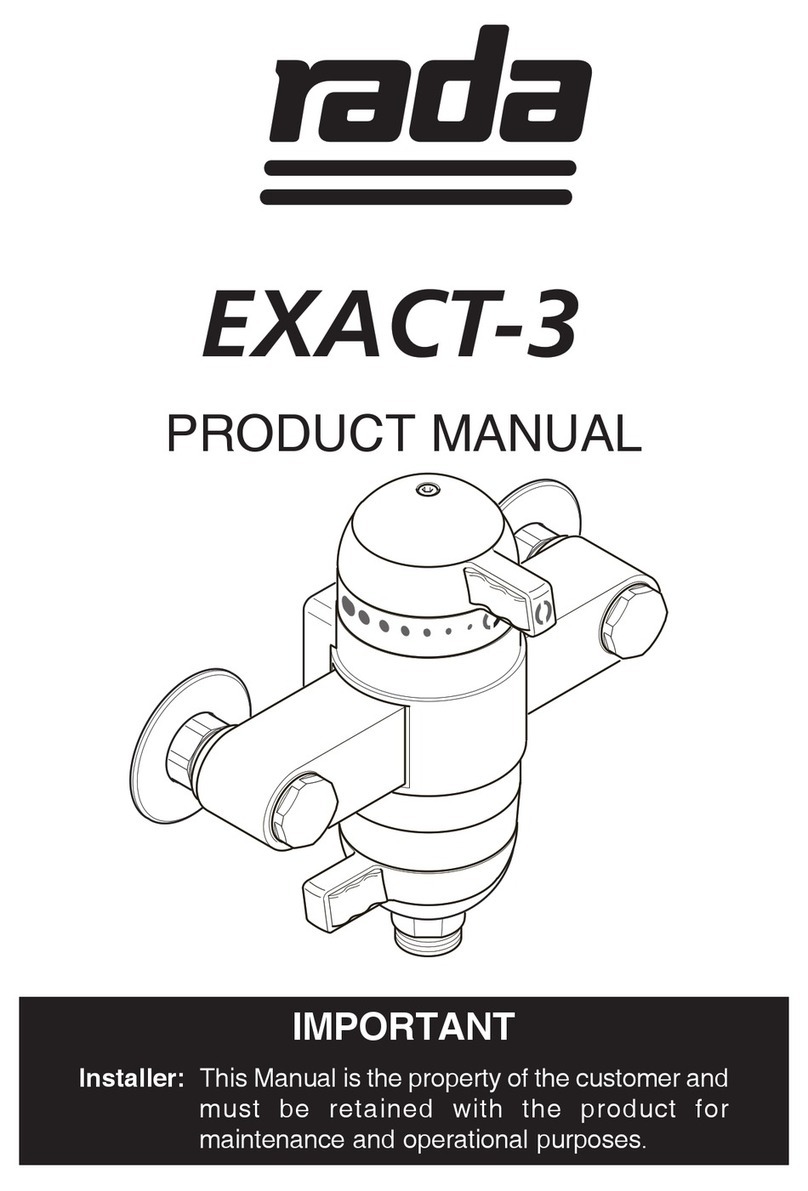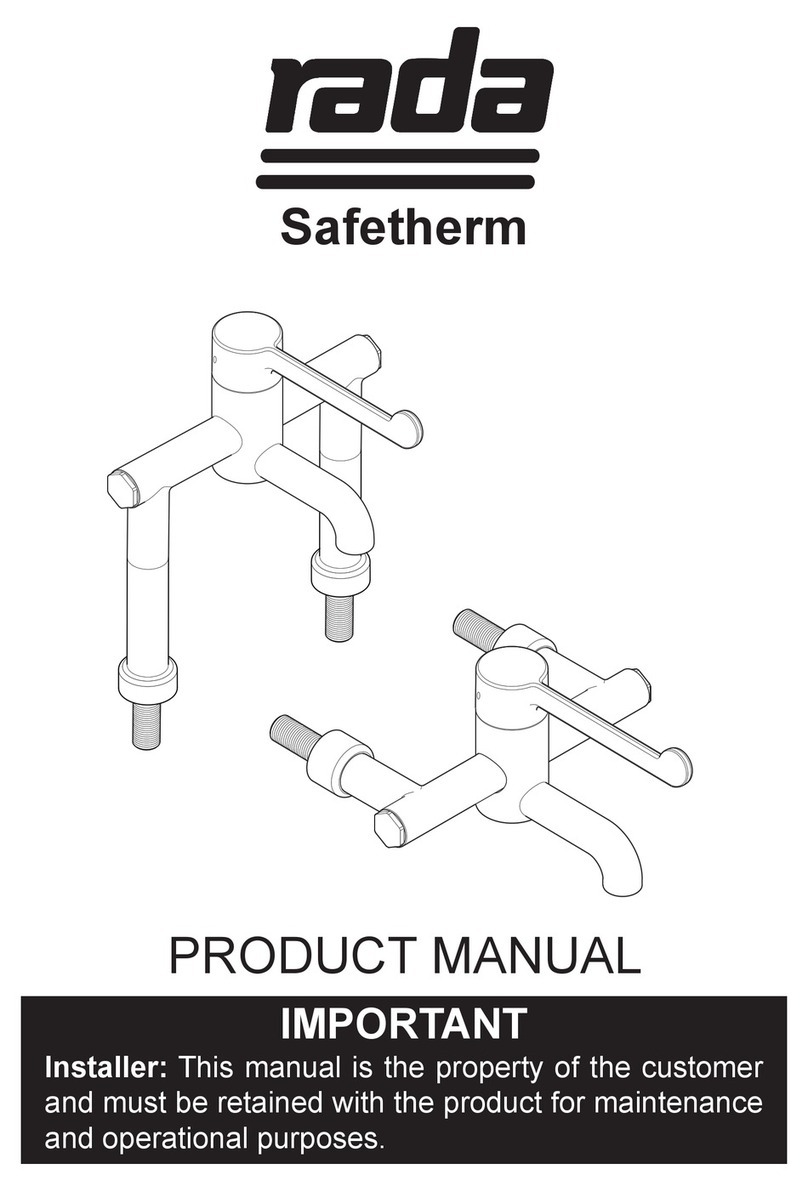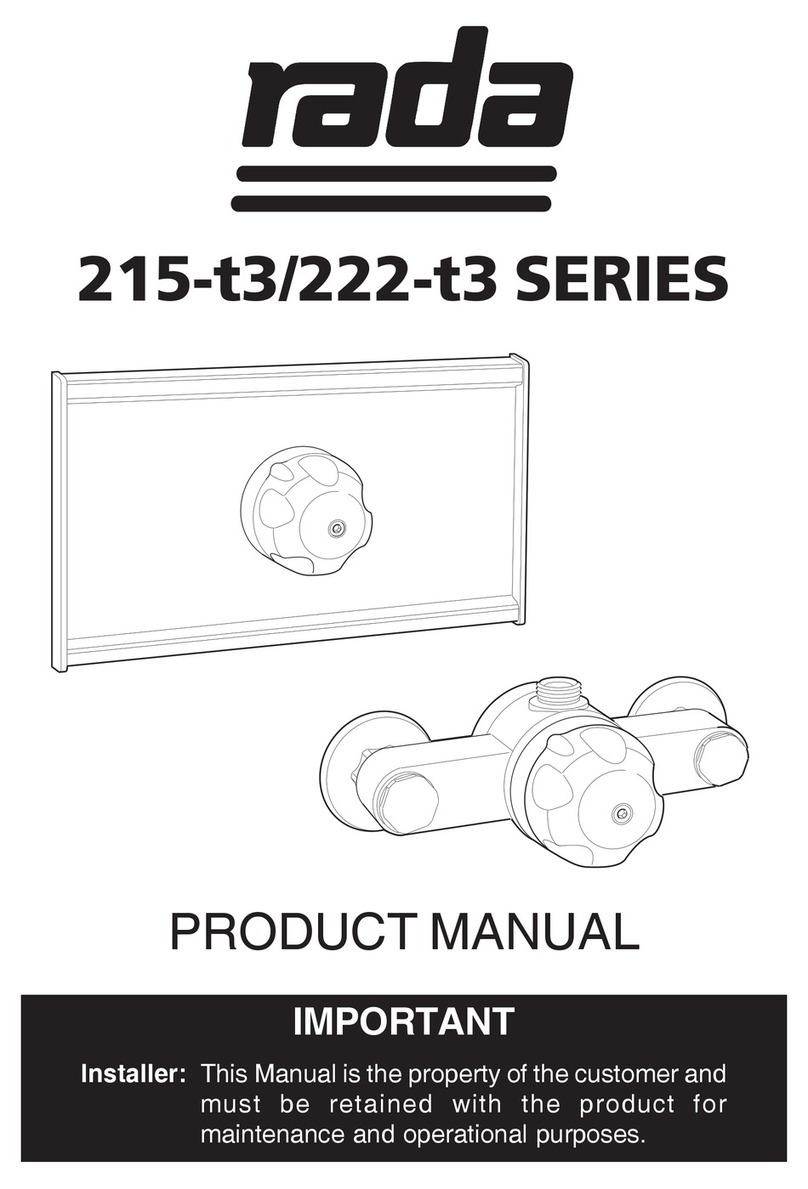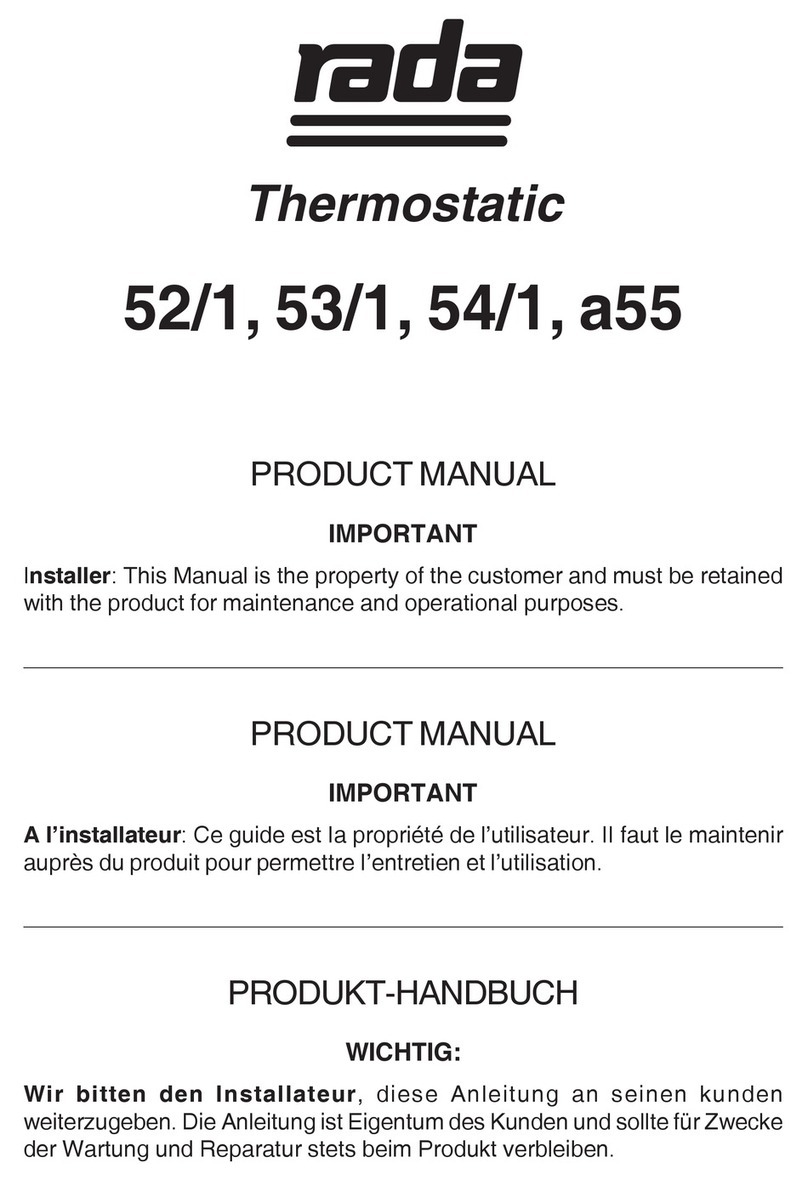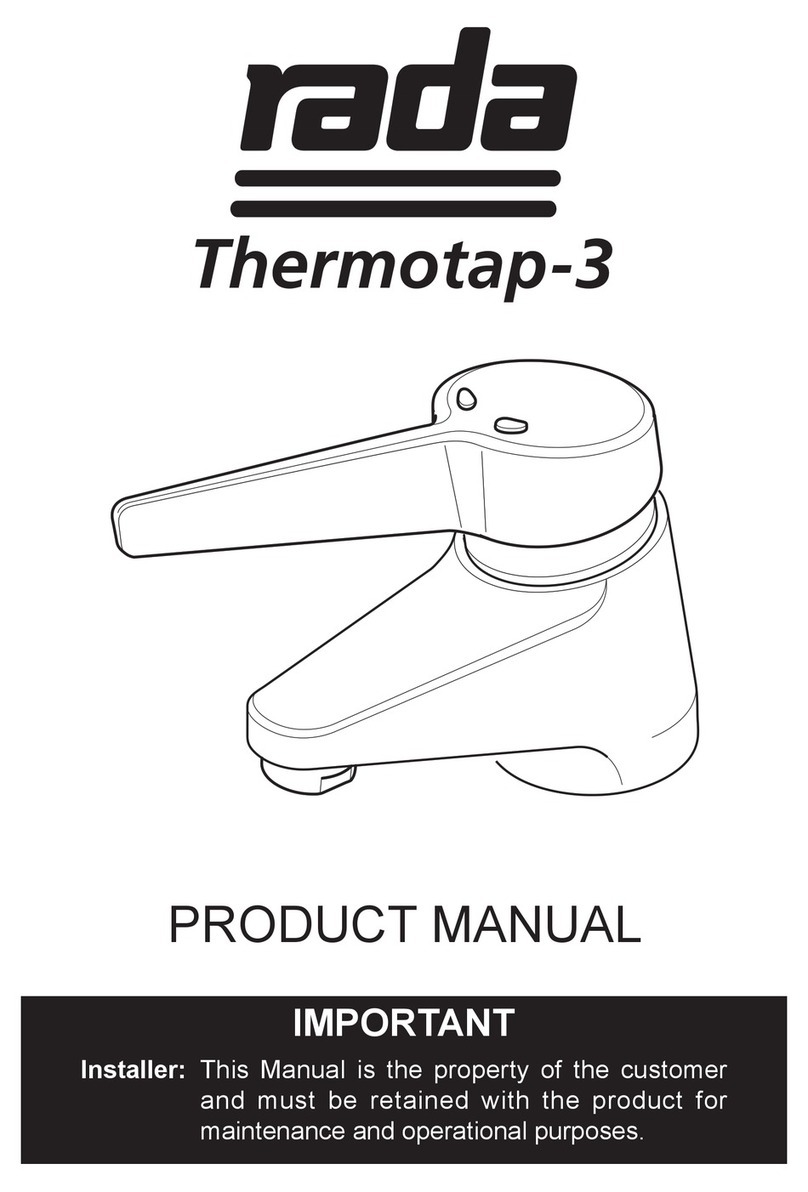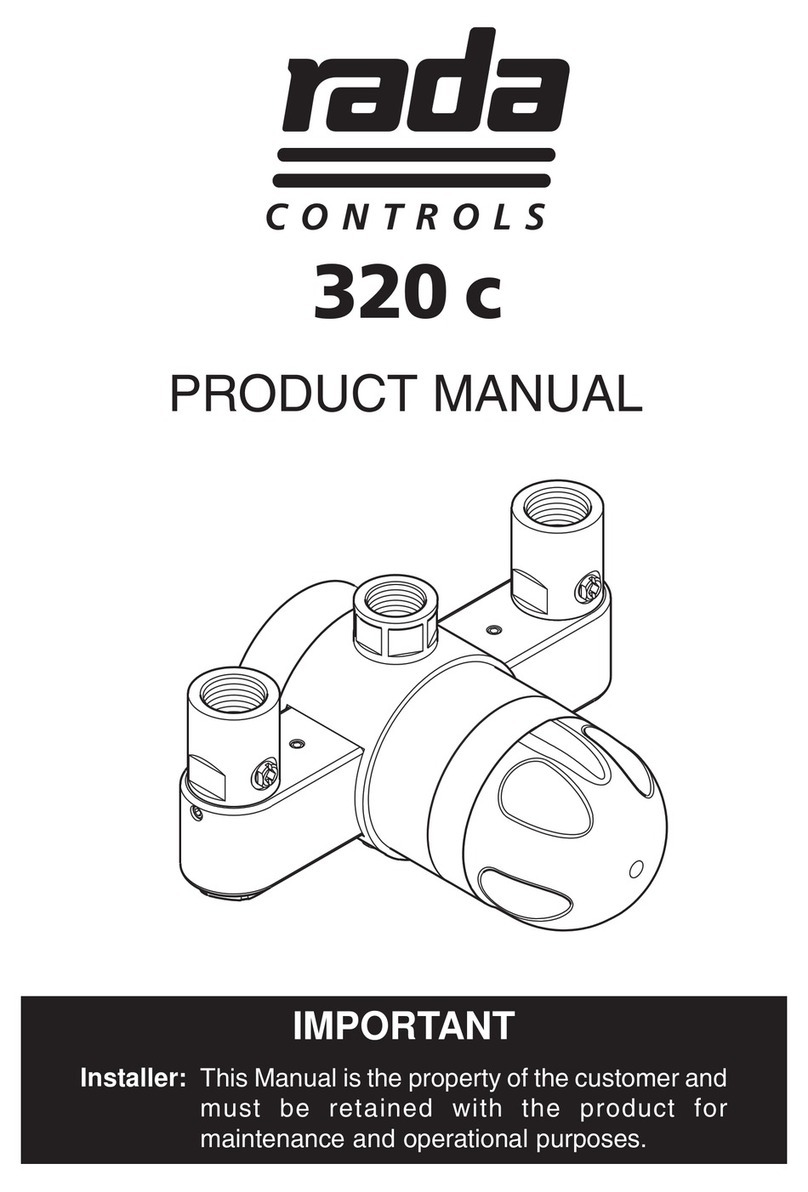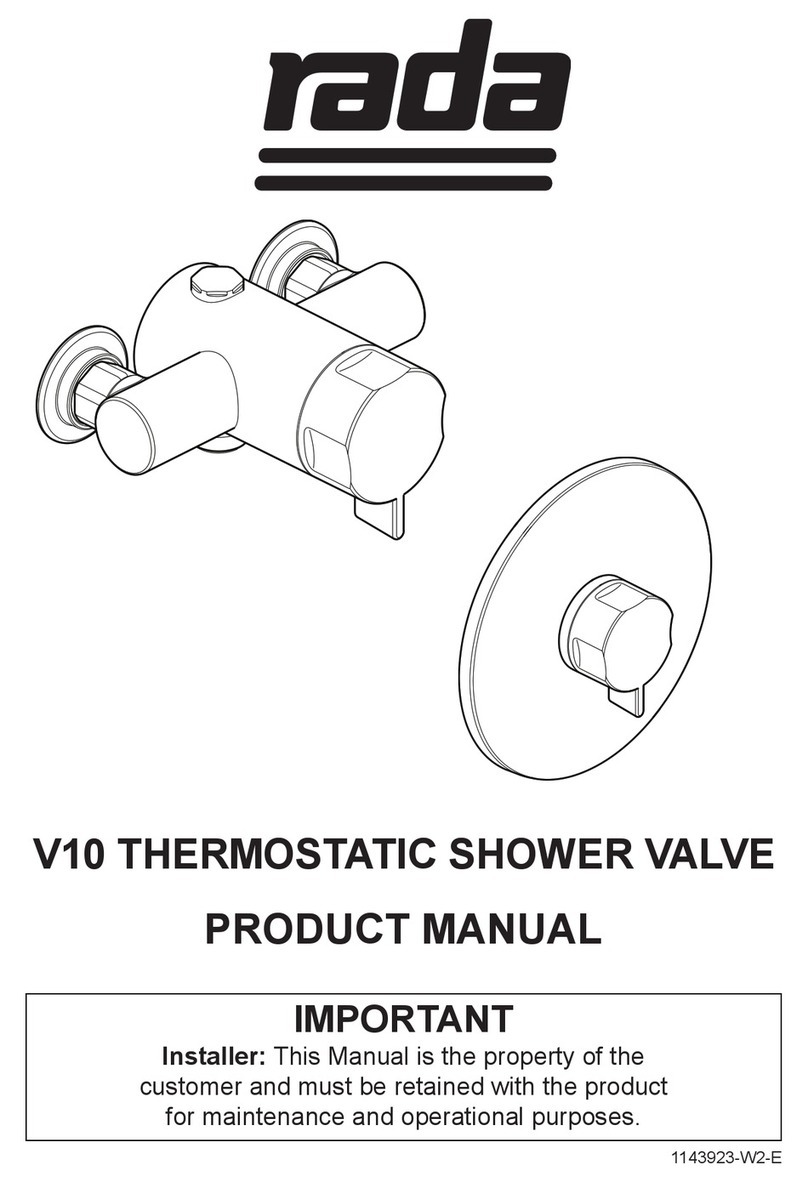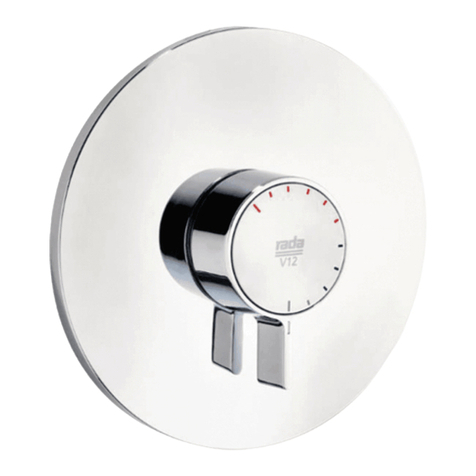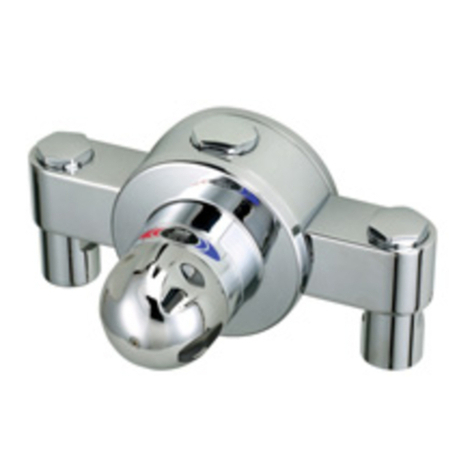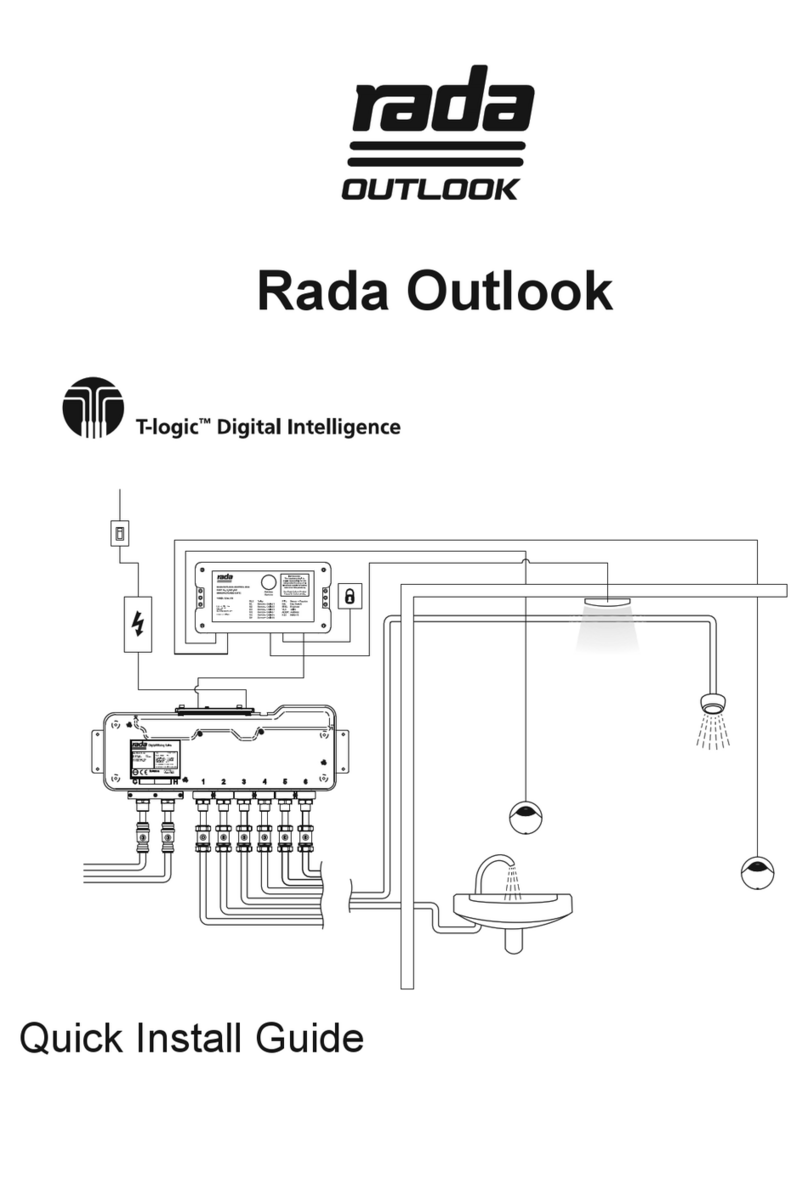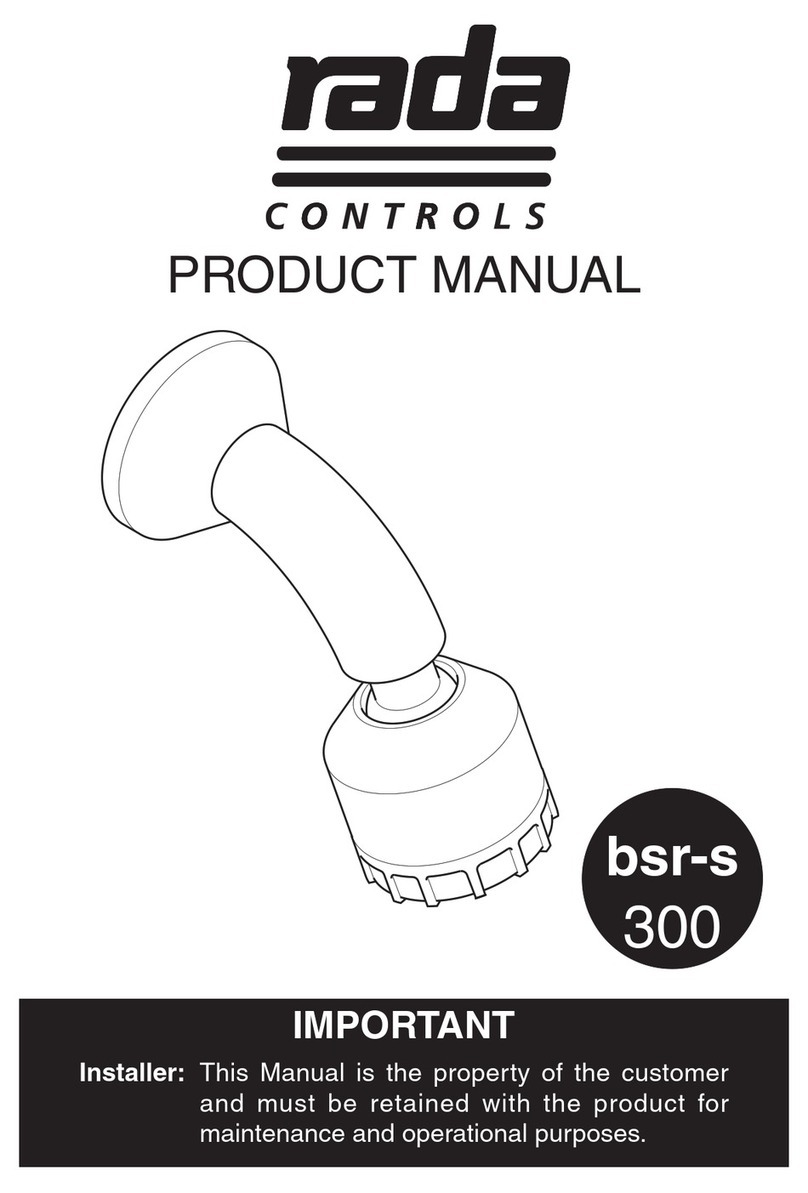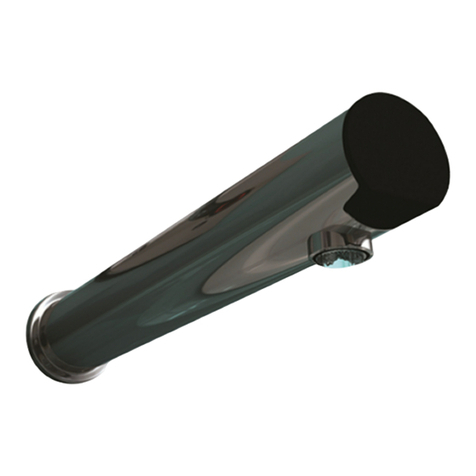
9
INSTALLATION
General
The Installation must be carried out in accordance with these instructions, and must
be conducted by designated, qualied and competent personnel.
1. The installation must comply with the "water Supply Regulations 1999 (Water
Fittings)" or any particular regulations and practices, specied by the local water
company or water undertakers.
2. Before commencing, make sure that the installation conditions comply with
the information given in section 'Specications'. For Type 3 valves, see also
installation conditions in the TMV3 Requirements Manual.
3. Care must be taken during installation to prevent any risk of injury or
damage.
4. Isolating Valves are combined with the Flexible Hoses and should be positioned
for easy access when servicing the BSM.
5. To eliminate pipe debris it is essential that supply pipes are thoroughly ushed
through before connection to the BSM.
6. Pipework dead-legs should be kept to a minimum.
7. Supply pipework layout should be arranged to minimise the effect of hydraulic
restriction or other system usage upon the dynamic pressures at the BSM inlets.
Recommended minimum supply-line pipe diameter is 22 mm or 3/4".
8. Systems which provide maintained supply pressures in excess of 5 Bar must
be tted with suitable pressure reduction equipment to balance the system
pressures at an appropriate level.
9. Inlet pressure tappings which allow measurement of the inlet pressures to the
BSM under operating conditions are particularly recommended for healthcare
applications with Type 3 Valves. Available as an optional accessory, refer to
section: 'Accessories'.
Important!
Three Flow Regulators are supplied tted to the product. These are required to
limit the ow rate to the bath and shower when installed on high pressure systems
(> 1 Bar). On low pressure systems these may need to be removed to increase the
ow. Refer to section: 'Flow Regulator Removal'.
For combination boilers only, a fourth (white) Flow Regulator is supplied with the
product to make sure that the boiler can supply the Rada Autotherm-3 BSM with an
adequate supply of hot water. This must be tted in the hot inlet, refer to section:
'Flow Regulator Removal'.
The tting of this Flow Regulator will render the Rada Autotherm-3 outside
the scope of the TMV3 scheme.


















